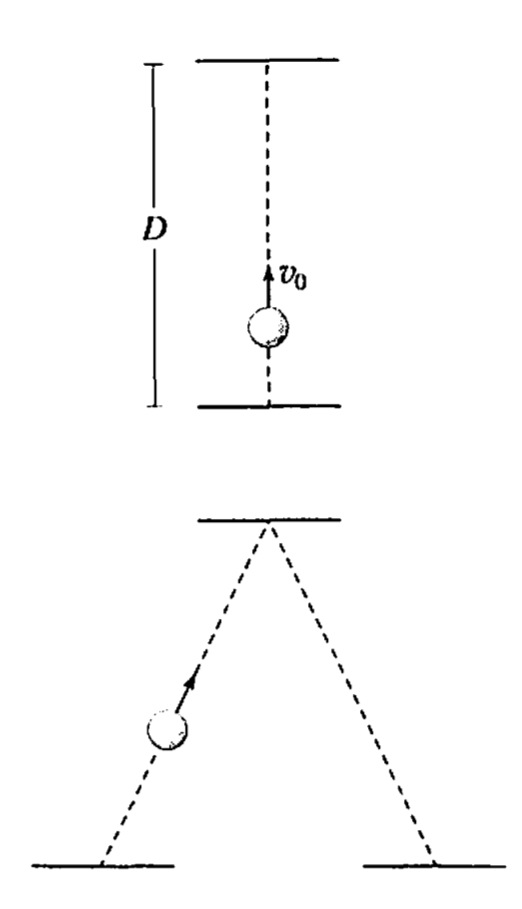An ideal superball clock features a ball bouncing back and forth between two walls in gravity-free space. The walls are a distance D apart, and the ball moves with constant speed vo, so the round-trip time is T = 2D/vo. An identical clock in a spaceship moves past us to the right at speed V. The walls are separated by a distance D in the ship frame, and the ball moves with speed to relative to the ship. From our point of view the ball moves diagonally, as shown below.
An ideal superball clock features a ball bouncing back and forth between two walls in gravity-free space. The walls are a distance D apart, and the ball moves with constant speed vo, so the round-trip time is T = 2D/vo. An identical clock in a spaceship moves past us to the right at speed V. The walls are separated by a distance D in the ship frame, and the ball moves with speed to relative to the ship. From our point of view the ball moves diagonally, as shown below.
Related questions
Question
As measured in our frame, the horizontal component of the ball's velocity is 2v, while the vertical compenent of the ball's velcolity is √(v02 - v2). How long will it take the ship-clock to tick once (a.k.a, for the ball to bounce once back and forth)?

Transcribed Image Text:D

Transcribed Image Text:An ideal superball clock features a ball bouncing back and forth between two
walls in gravity-free space. The walls are a distance D apart, and the ball moves
with constant speed vo, so the round-trip time is T = 2D/vo. An identical clock
in a spaceship moves past us to the right at speed V. The walls are separated by
a distance D in the ship frame, and the ball moves with speed vo relative to the
ship. From our point of view the ball moves diagonally, as shown below.
Expert Solution
This question has been solved!
Explore an expertly crafted, step-by-step solution for a thorough understanding of key concepts.
This is a popular solution!
Trending now
This is a popular solution!
Step by step
Solved in 2 steps with 2 images
